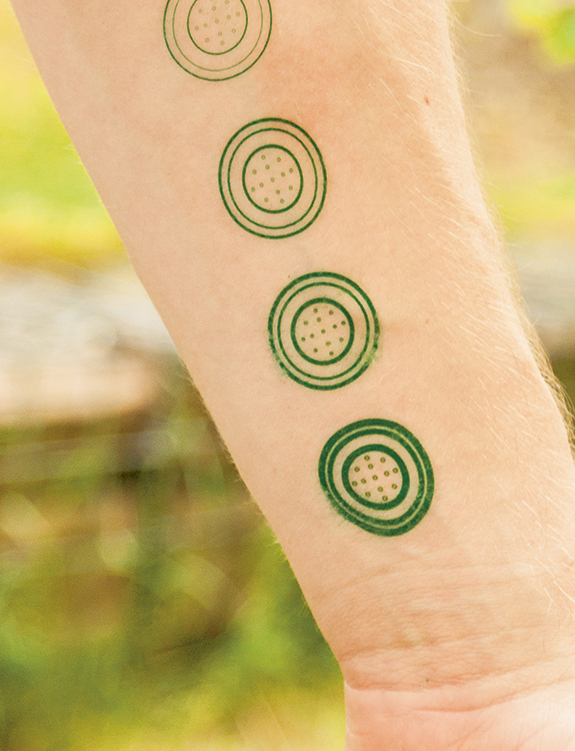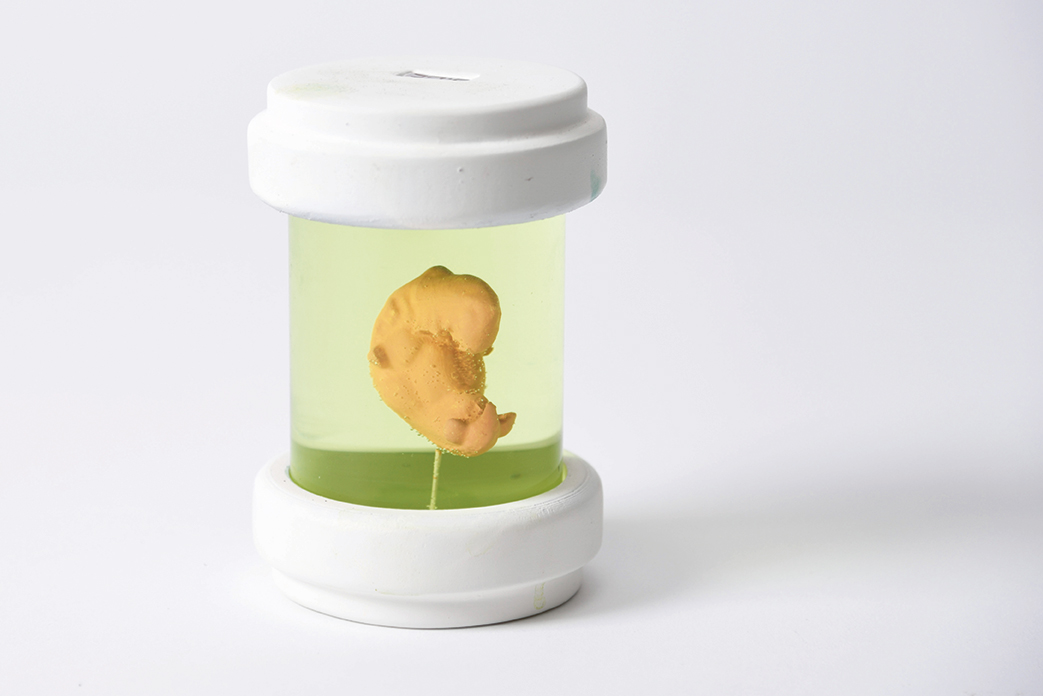ENERGY INK
ENERGY INK
CHICKENTALES
THE ALGAE MAN
THE ALGAE MAN
2030
an algae symbiosis
Symbiosis (from Greek „living together“) describes any type of close and long-term biological interaction between two different biological organisms. Microalgae can be found inside different organisms where they are an important part of their host. Often the host offers its “partner-algae” a safe habitat and gets remunerated by nutrients and other products of the algae`s photosynthesis. In this project, I developed three futuristic concepts of how our future with algae symbiosis could look, how it would affect our everyday life and which abilities we could gain. My starting point was research into already existing symbioses between different animals and microalgae, which I transferred to human life. The results are not only new practical abilities, but also the question of how we define a “healthy” habitat for ourselves and our farm animals.
| student: | Luis Undritz |
| project: | microbes II |
| year: | 2017 |
ENERGY INK
The starting point for this futuristic concept was the ability of sea snails to eat microalgae in the first part of their life. They store the chloroplasts of the algae under their skin to produce energy for themselves. After having stored enough chloroplasts under their skin they do not need to eat the algae any more. Scientists used this method and injected cyanobacteria into the embryos of zebra fish. The bacteria started to multiply in the cells of the fish and produced oxygen and glucose for their host. These scientific findings are the foundation of this concept in which we tattoo cyanobacteria into our skin cells. The goal is not to become independent from conventional food sources, however, the cyanobacteria are able to produce a lot of substances we need only in small concentrations like vitamin B12 or small quantities of glucose, which is interesting for medical applications. Vegans can use the tattoo to get their own source of vitamin B12 which we can otherwise only get from animal components. With the help of gene alteration, the cyanobacteria would be able to produce medical products like licopene or interferons. Users would be more independent from the pharmaceutical industry and would not need a pharmacy nearby. A conventional tattoo machine is not suitable to make this kind of tattoo. The cyanobacteria solution has to get injected directly into a skin cell. Therefore, I developed a DIY skin cell hacking tattoo machine.

CHICKENTALES
The three-finger-sloth cultivates microalgae on its fur and harvests them as an additional food source. If we could transfer this ability to chickens from livestock farming they could produce their own food. How would this affect the chickens? How would this change their lives? Chickens that live in modern intensive mass animal farms are stressed by their lack of space. One result is aggressive behaviour and cannibalism. There would be two significant developments: the self-sufficient chickens would prefer a narrow living space because they would feed each other with the algae in their plumage. A high sense of togetherness and solidarity would evolve and the chickens would also change physically. To harvest the algae from the feathers a beak is not the optimal tool. It would regress and they would form a rough tongue as their new optimal eating tool. We could create a chicken, which is customised for the conditions of factory farming. The question we have to ask: is it acceptable to customise the chickens for intensive factory farming instead of customising the farming method to accommodate the chickens’ preferred living conditions?
To visualise this, I decided to create a series of spray cans, which we would use to spray the new born chicken to cultivate algae on them.

THE ALGAE MAN
The symbiosis between the spotted salamander and microalgae was the starting point for this concept. The eggs of this animal get infiltrated by microalgae which produce oxygen for the salamander embryos and consume their waste products. What would happen, if we would infect human embryos with microalgae? How would this symbiosis affect their future life? This human being would offer the algae a safe habitat and it could use products of the algae photosynthesis for their metabolic processes. The algae also have the ability to utilise waste products like CO2 – so both would profit from this artificially created symbiosis. The result would be that this human being would have new demands regarding their environment. They would have to provide the algae with enough CO2, phosphate and nitrate. To visualise these new living conditions, I created a small series of everyday objects which got twisted in their purpose and customised for the algae man’s life. If we look at polluted industrial areas in China we can find an environment which would be an optimum habitat for thealgae man. Lots of left-overs from fertiliser in the water cycle and a high amount of CO2 in the air are typically found in these areas. So, the resulting critical question is: how do we define a healthy and intact living space? Is it only connected to the requirements for a healthy (human) life or is it about high biodiversity and high substance flow?

